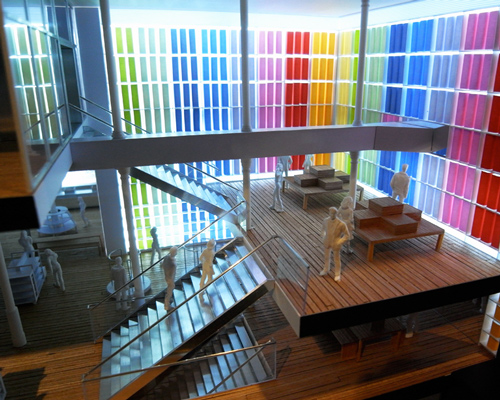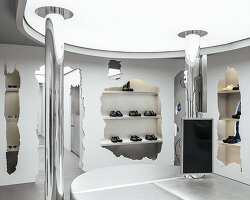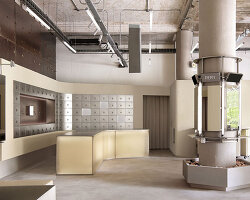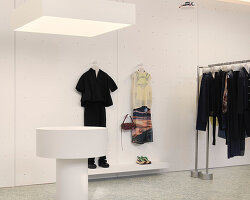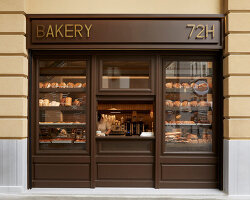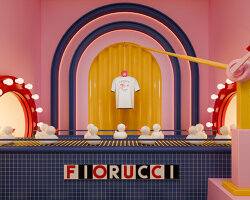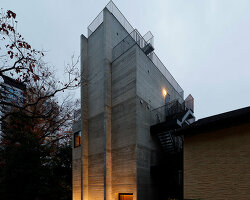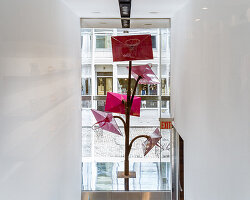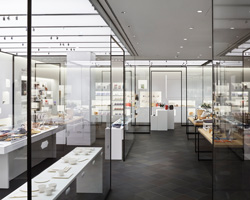wonderwall is an interior design firm in japan that was established by masmichi katayama. included in its portfolio are commercial, retail, restaurant and bar spaces, as well as office showrooms and building complexes which are distinct in their design while remaining attentive to function. in katayama’s practice, scale models play an important role throughout his design process as a means of capturing a space before it is built. an traveling exhibition entitled ‘wonderwall archives’ showcases scale models from selection of the firm’s projects ranging from 1998 to the present.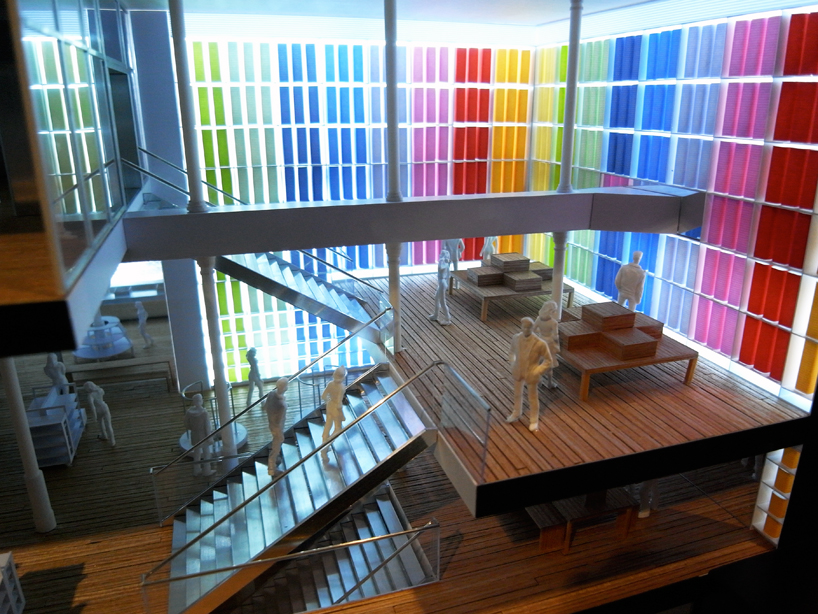 uniqlo soho new yorkimage © designboom
uniqlo soho new yorkimage © designboom
designboom visited the exhibition at its first showing in tokyo at the ginza pola museum annex and got a glimpse into of katayama’s ‘small real world’. the show provides a visit through the spaces created by the japanese designer providing an alternative perspective to the already existing structures. the exhibition has also been shown at the mitsubishi-jisho atrium in fukuoka and will conclude its tour at nagoya parco gallery in tokyo in march 2011.
this is part 1 of designboom’s coverage of the show. you may view wonderwall archives: part 2 here.
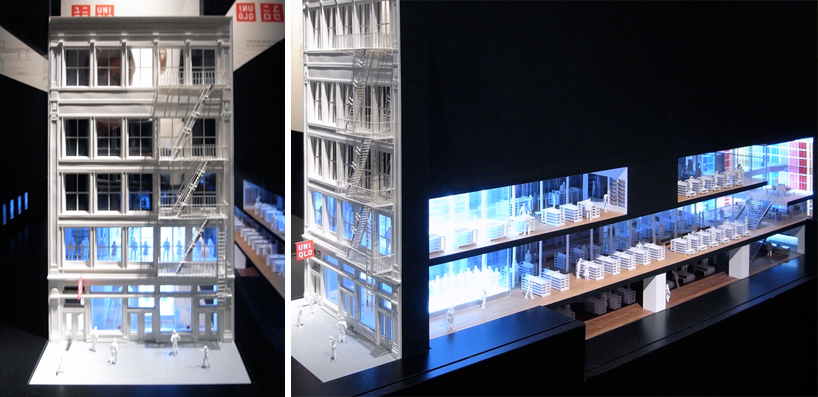 uniqlo soho new york image © designboom
uniqlo soho new york image © designboom
uniqlo soho new york location: soho, new york year: 2006
this shop in soho, new york city is the first global flagship store that fast retailing created for uniqlo. katayama designed the store sharing the grand concept of a ‘beauty-conscious, ultra-rational style’ suggested by kashiwa sato, creative director of samurai. attempting to apply the potential of the grand within the retail space, katayama incorporated volume and the power of clothing into the store’s design, creating a space that is solely for clothing. rather than emphasizing the vastness of the thousands of square meters of floor space, katayama concentrated on making it appear small enough for exploration by instantly communicating its spacial volume and designing an uninterrupted line of motion that enables customers to enjoy the store and overall shopping experience.
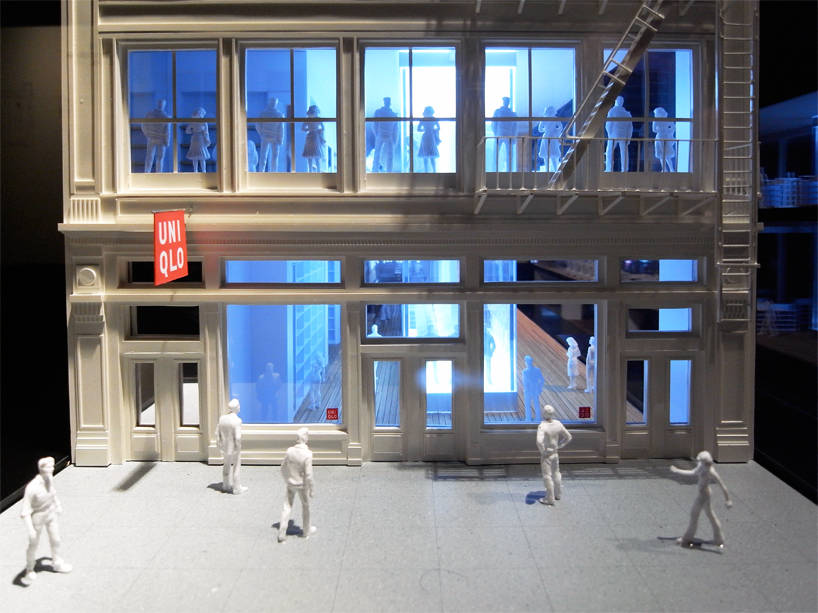 uniqlo soho new york image © designboom
uniqlo soho new york image © designboom
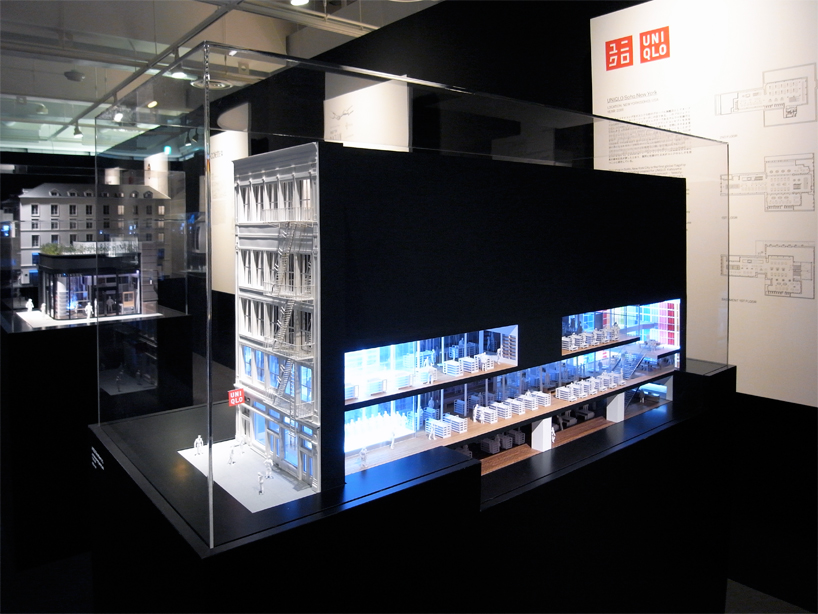 uniqlo soho new york image © designboom
uniqlo soho new york image © designboom
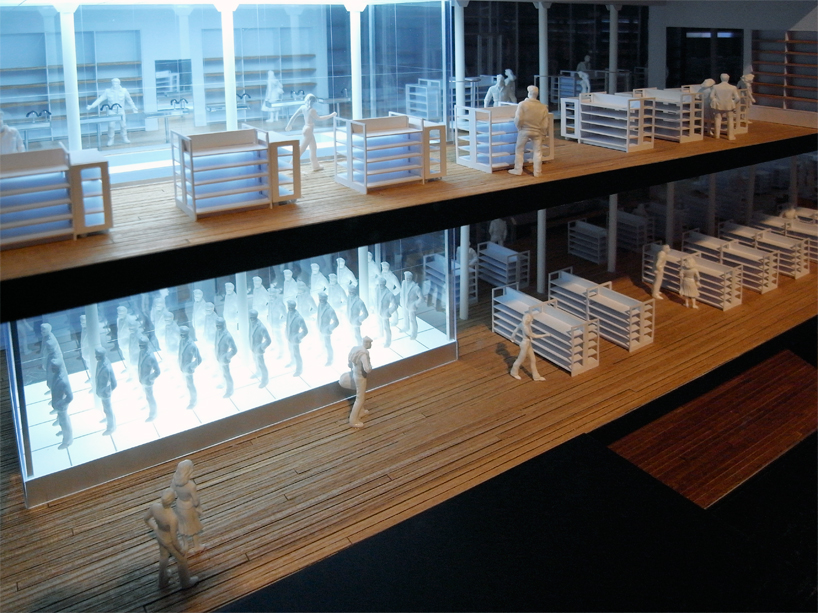 uniqlo soho new york image © designboom
uniqlo soho new york image © designboom
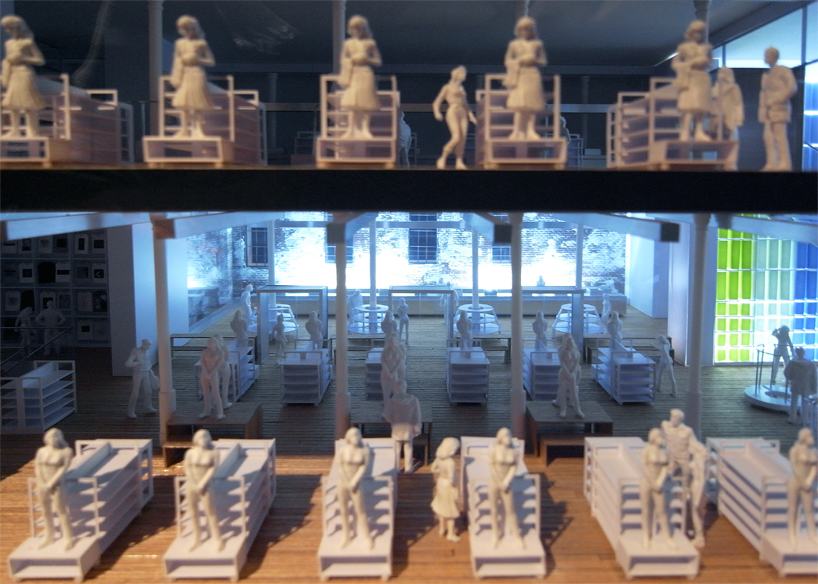 uniqlo soho new york image © designboom
uniqlo soho new york image © designboom
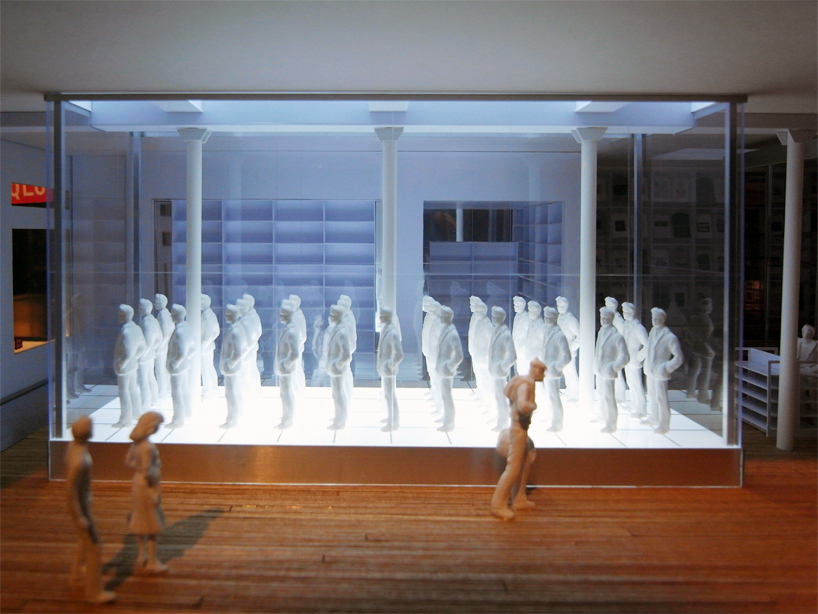 uniqlo soho new york image © designboom
uniqlo soho new york image © designboom
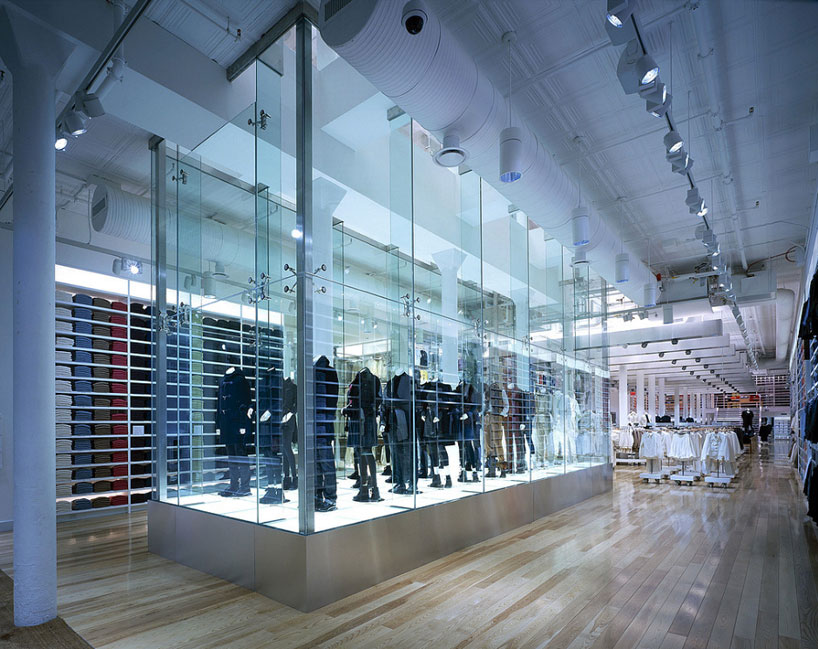 uniqlo soho new york photo: kozo takayama
uniqlo soho new york photo: kozo takayama
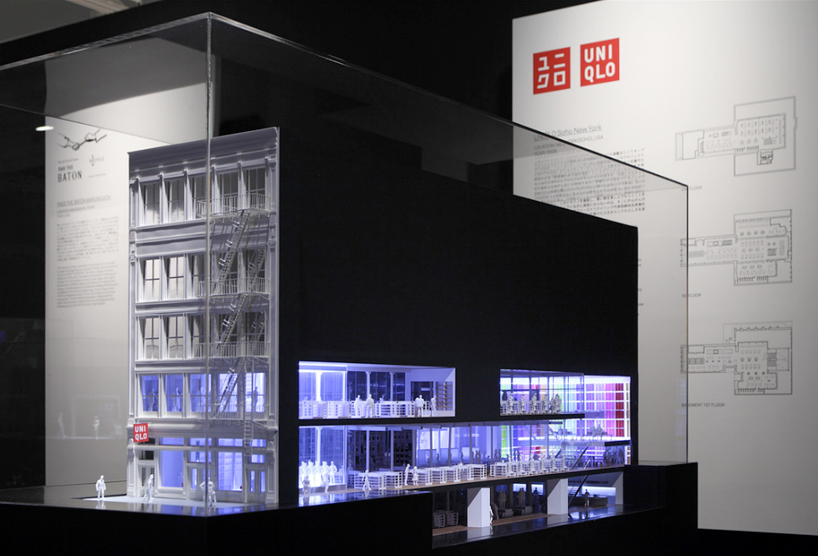 uniqlo soho new york photo: kozo takayama
uniqlo soho new york photo: kozo takayama
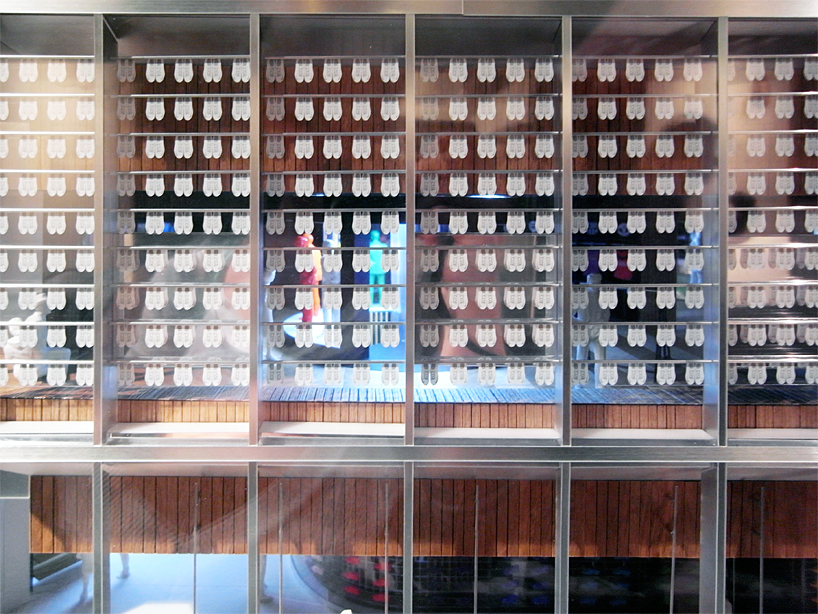 NIKE flagship store image © designboom
NIKE flagship store image © designboom
NIKE harajuku location: harajuku, tokyo year: 2009 scale: 1:30
the largest in the nation, NIKE’s first flagship store in tokyo, designed by katayama measures 945.5 square meters. the experienced-based store with facilities such as the runner’s studio – for selecting shoes that match individual’s feet and running style – the NIKEID studio, and an interior layout which appears as if there are multiple sports shops coexisting within sports playground. the design expresses the joy of athletics, by incorporating components associated with sports and which are characteristically NIKE, which include a running track, chandelier made of shoes, hundreds of runner’s bibs and a wall made from the out soles of sneakers. the store is well integrated into its surrounding environment, featuring a dual entrance located on both sides of the establishment which naturally invites consumers or even runners passing by, to come inside.
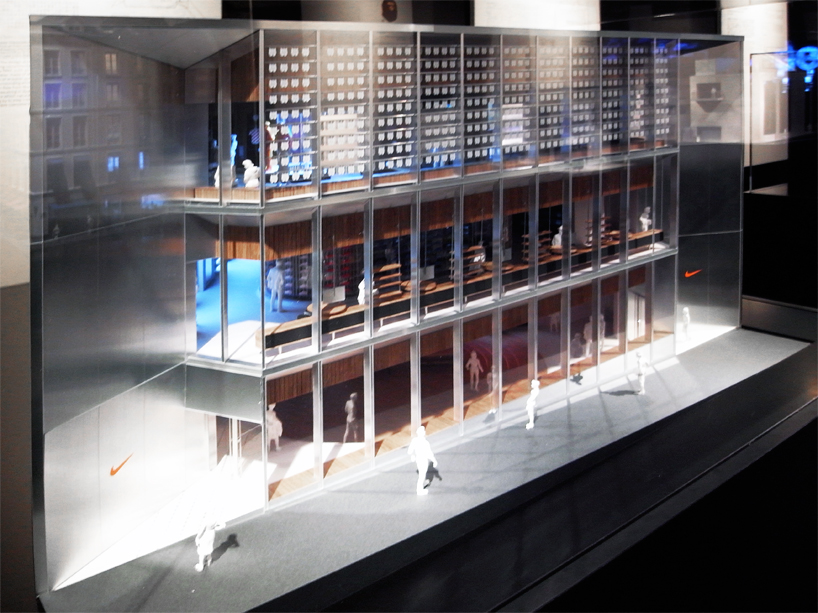 NIKE flagship store image © designboom
NIKE flagship store image © designboom
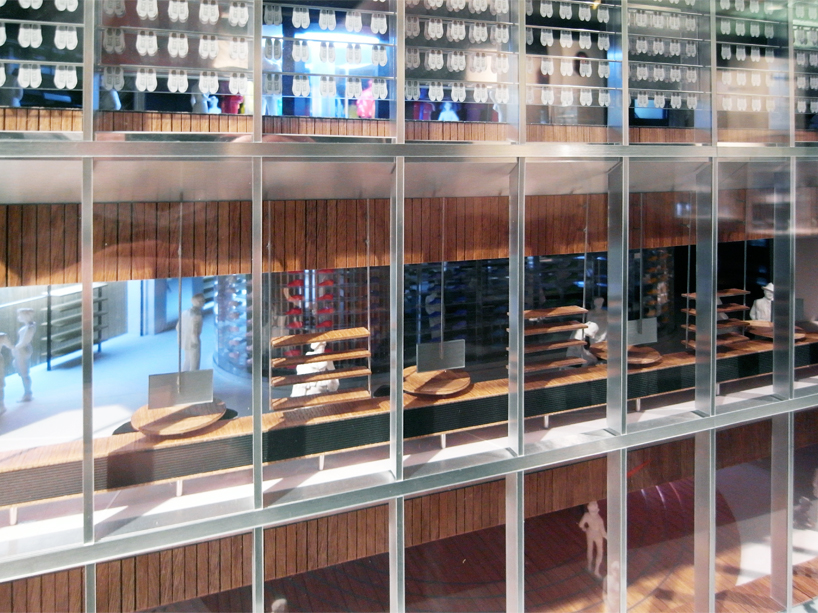 NIKE flagship store image © designboom
NIKE flagship store image © designboom
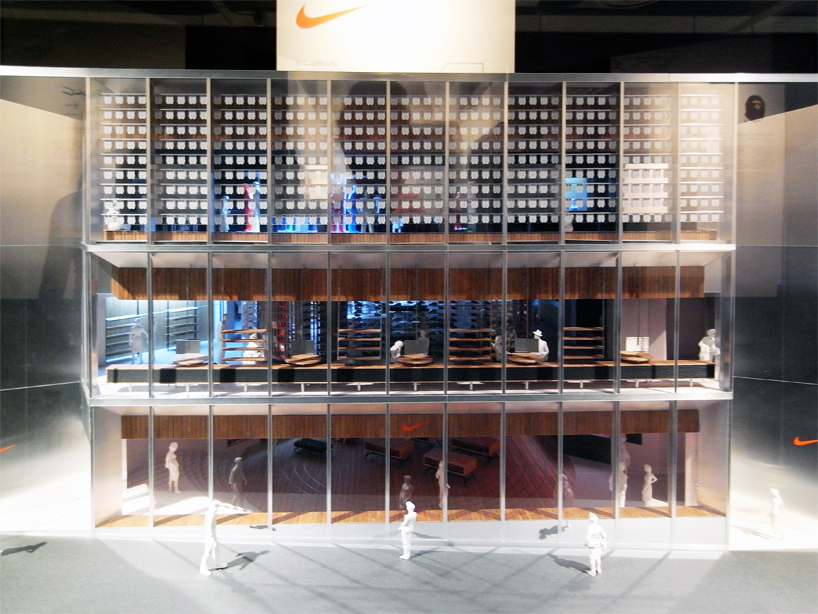 NIKE flagship store image © designboom
NIKE flagship store image © designboom
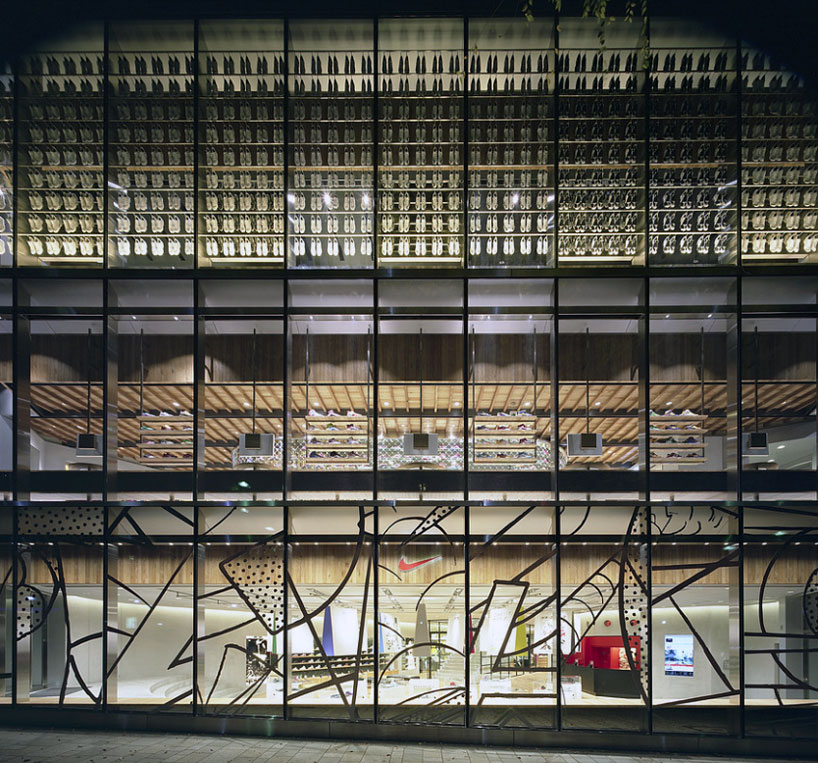 NIKE flagship store photo: kozo takayama
NIKE flagship store photo: kozo takayama
 NIKE flagship store photo: kozo takayama
NIKE flagship store photo: kozo takayama
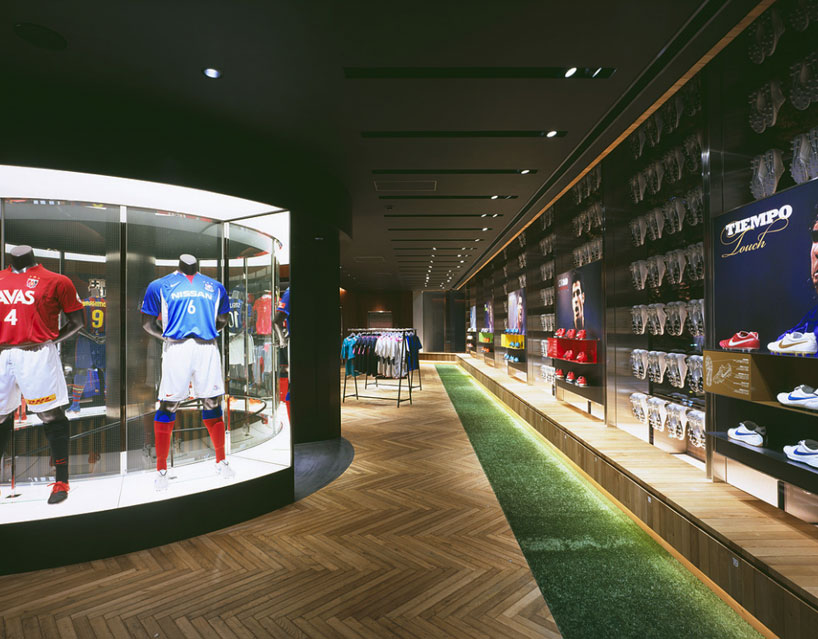 NIKE flagship store photo: kozo takayama
NIKE flagship store photo: kozo takayama
 NIKE flagship store photo: kozo takayama
NIKE flagship store photo: kozo takayama
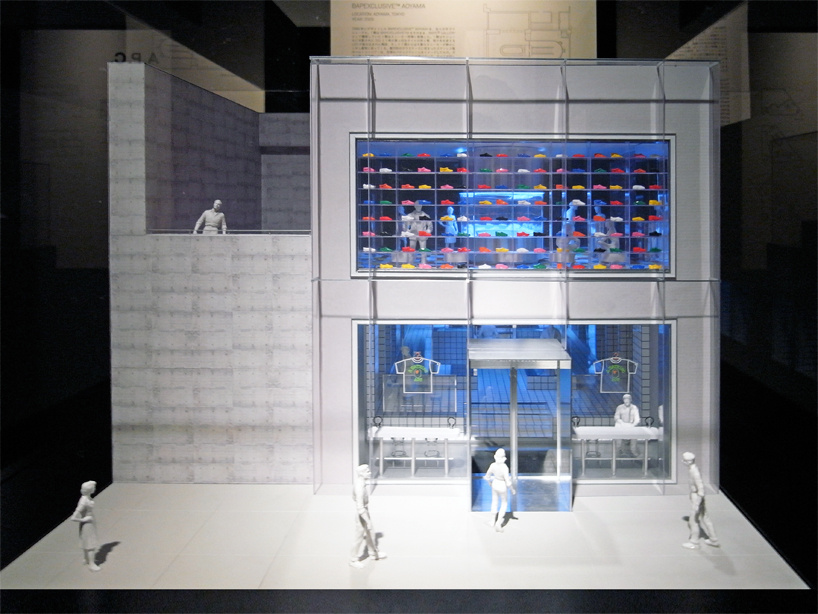 bapexclusive™ aoyama image © designboom
bapexclusive™ aoyama image © designboom
bapexclusive™ aoyama location: aoyama, tokyo year: 2005 scale: 1:30
designed in 1999, the renewed bapexclusive™ store in aoyama houses a second floor that has been converted from the bape® gallery into a floor for sneakers. 200mm square tiles govern the design of the space’s first floor, which has remained as the bapexclusive™ store front. the overall design of the space includes stairs with color changing LEDs and an overwhelmingnumber of sneakers. a stainless steel conveyer belt inside an oval glass case, taken from an airport baggage claim conveyer, is used as a display device. as represented by the glass exterior, everything is transparent and visible and seems to be straightforward at this boutique. all the elements katayama has used for this store, including tiles, LEDs, neon signs and carpet are familiar materials. however the arrangement of these materials results in a space no one has ever seen before.
 bapexclusive™ aoyama image © designboom
bapexclusive™ aoyama image © designboom
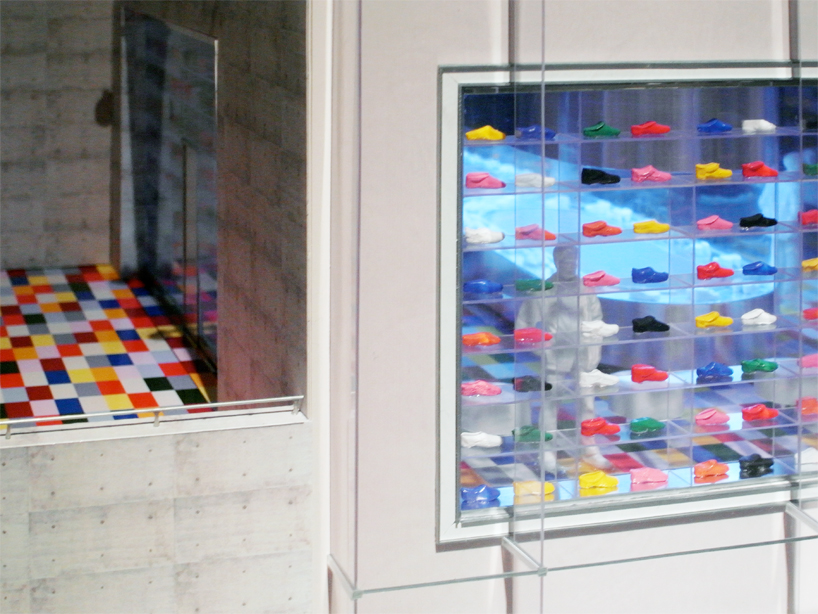 bapexclusive™ aoyama image © designboom
bapexclusive™ aoyama image © designboom
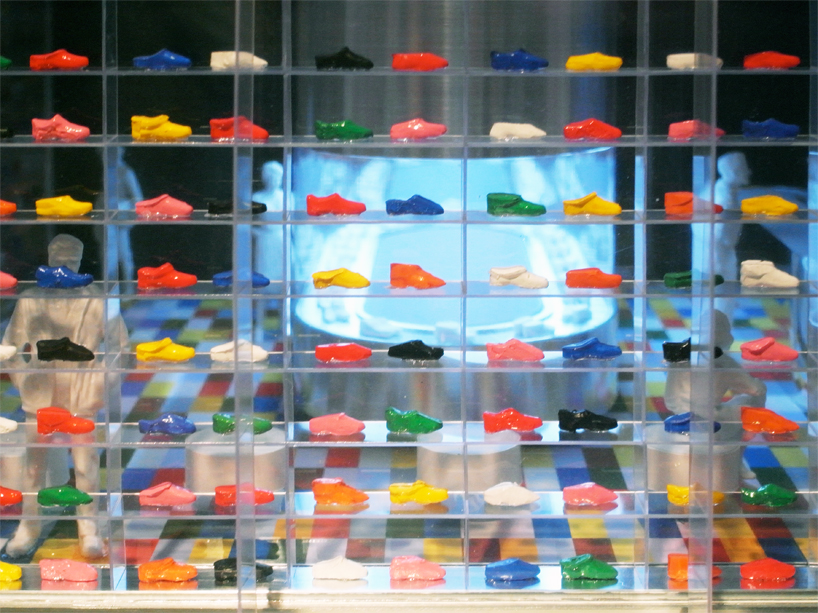 bapexclusive™ aoyama image © designboom
bapexclusive™ aoyama image © designboom
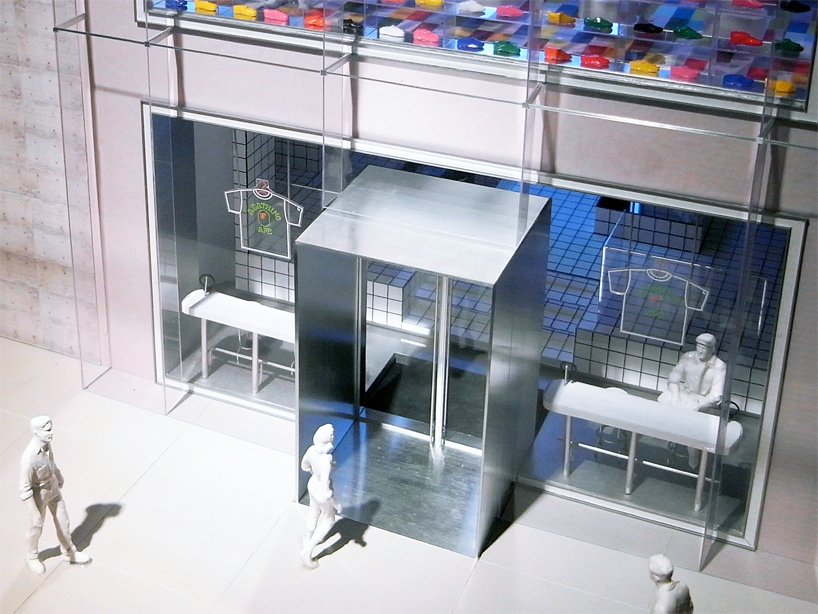 bapexclusive™ aoyama image © designboom
bapexclusive™ aoyama image © designboom
 bapexclusive™ aoyama photo: kozo takayama
bapexclusive™ aoyama photo: kozo takayama
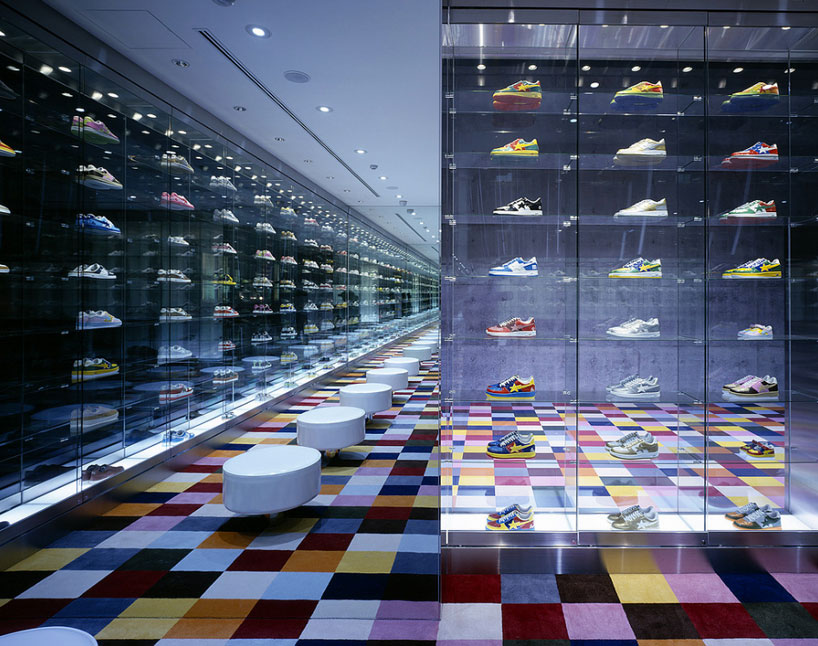 bapexclusive™ aoyama photo: kozo takayama
bapexclusive™ aoyama photo: kozo takayama
 bapexclusive™ aoyama photo: kozo takayama
bapexclusive™ aoyama photo: kozo takayama
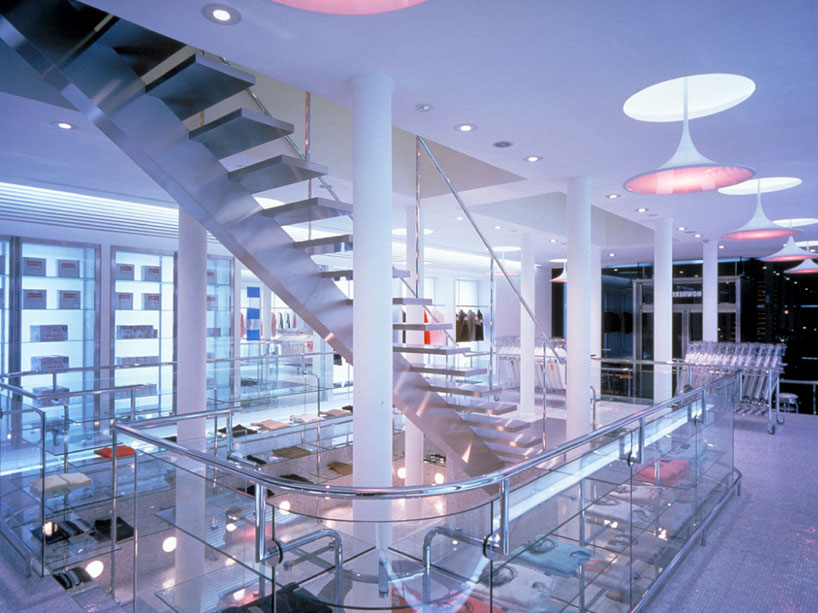 bapexclusive™ aoyama photo: kozo takayama
bapexclusive™ aoyama photo: kozo takayama
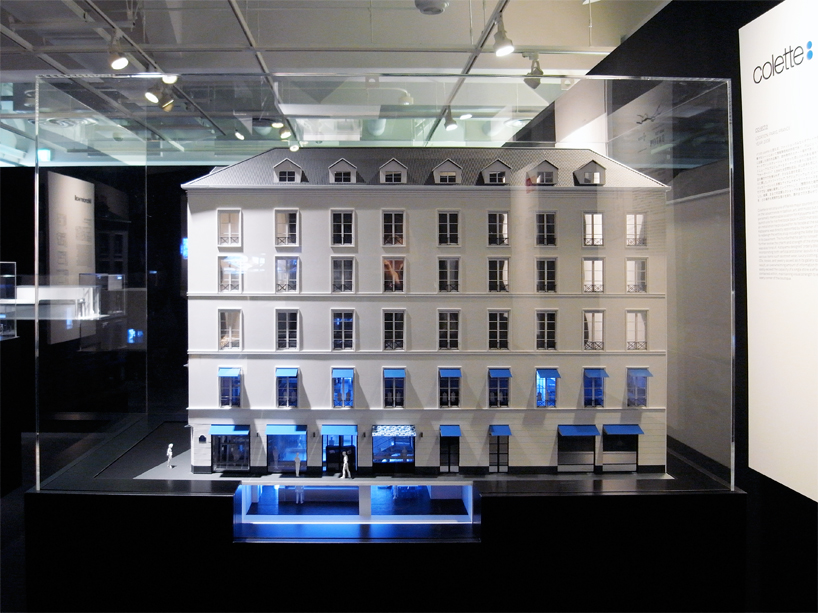 colette image © designboom
colette image © designboom
colette location: paris, france year: 2008
colette is not only one of paris’s major sources of information on the latest trends in fashion, art and music, but also a personally memorable place for katayama as it was the european launch site for his first book, back in 2003, where he hosted an installation and facade design simultaneously. for the project, katayama was invited by the owner of the store to redesign the entire shop, including the water bar located in its basement. the hurdle that he set for himself was to further evolve the charm and strength of the retail space that he was so fond of. katayama designed ‘orderly disorder’, incorporating both vertical and planar layouts in displaying various items such as street wear, luxury clothing, cosmetics, CDs, books and jewelry. as a result, an overwhelming amount of information that would easily exceed the capacity of a single store, is effectively contained within, maintaining visual strength to each and every corner of the boutique.
 colette image © designboom
colette image © designboom
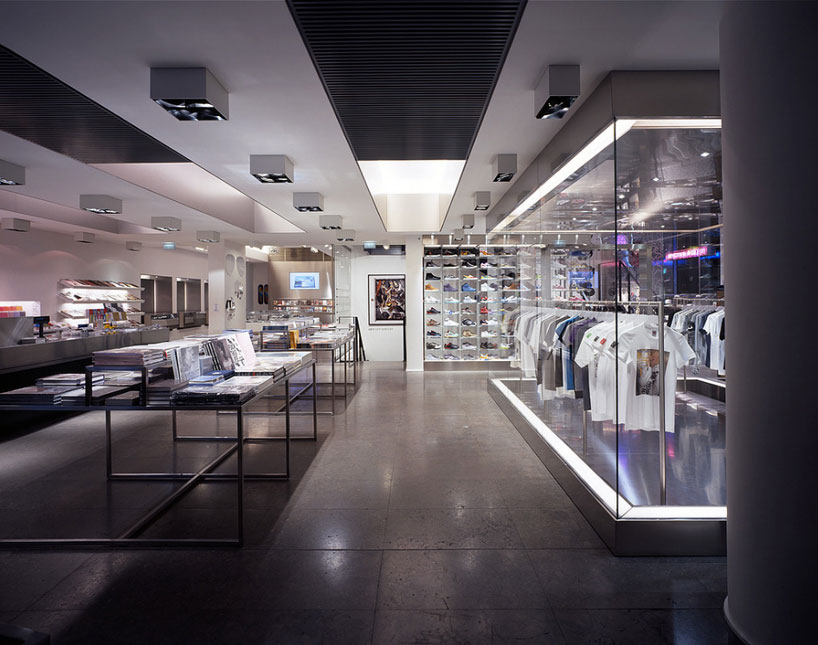 colette photo: kozo takayama
colette photo: kozo takayama
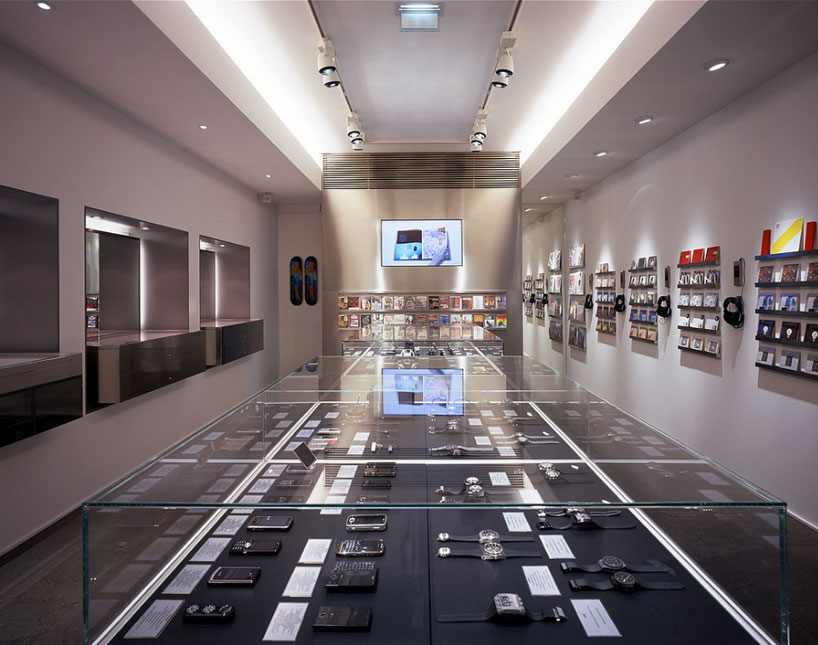 colette photo: kozo takayama
colette photo: kozo takayama
